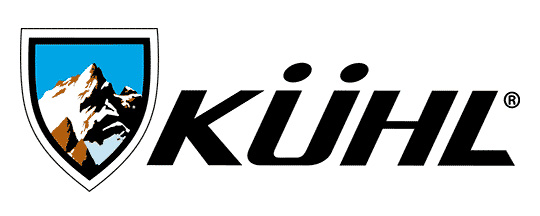Lately, I’ve been thinking about product branding, and how brand loyalties once formed can evolve, or worse, disappear over time. While my professional expertise is in the area of “branding,” this topic is not merely academic for me. I truly love brands and buy the brands I love.
As a young man, two philosophies profoundly influenced my understanding of branding, and its power to influence buying decisions and personal lifestyle. The first of these influences was The Whole Earth Catalog. First published in 1968, TWEC reviewed and recommended what they considered the essential tools for living a righteous counterculture life. The second, and even more profound, influence was the concept of “Positioning,” first introduced in Industrial Marketing magazine that same year, and later popularized by the seminal book, Positioning: The Battle for Your Mind, by Jack Trout and Al Ries. “Positioning” defined how a product compared to its competitors in the marketplace, as well as the mind of the consumer. When competitors offered largely the same kinds of products, positioning offered marketers ever more subtle ways to differentiate themselves from their competition.
The idea of a product that is distinguished by a brand, or mark (later, a trademark), had been around for a couple thousand years. However, the post-WWII economic boom, with its explosion of marketing messages in the form of print and magazine ads, radio spots, billboards, and beginning in the 1950’s, television, showed marketers that corralling their multitude of messages was critical. Around this time, businesses developed the concept of brand management.
However, what really galvanized the world of marketing was the popularity of more emotional advertising that appeared in the 1960’s. These new contemporary, and personal messages had a powerful effect on an emerging bloc of consumers – the post-war baby boomers who were now morphing into adult consumers.
Radiating from the opposite ends of the country – West Coast counter culture versus East Coast / Madison Avenue – these seemingly competitive philosophies actually reinforced each other. The marriage of opposite views helped plant the seed for brands such as Volkswagen, Porsche, Sony, Rolex, and Nikon in many hearts including mine. I drove a VW Beetle, later a Porsche 356B. I owned a Sony component home stereo system, wore a Rolex, and shot my photos with a Nikon. Using these brands made me feel somehow more knowledgeable and skilled. In other words, more hip. Products like these were once called “aspirational” brands. I bought and used these things because they represented a lifestyle that I aspired to.
Time changes everything. Today VW is the second largest carmaker in the world though its cars bare little relationship to the bare bones, spunky Beetles I drove 50 years ago. Porsche morphed from a quirky and affordable pocket rocket into a movie star’s trophy that’s out of reach to all but the one percent. When home stereo components became obsolete, Sony reinvented itself into a media conglomerate. My Rolex watch became an irrelevant, clunky and expensive piece of jewelry once I acquired a smart phone. Only Nikon still makes products that are as useful to me in 2023 as they were in 1965.
Yes, those brands changed…but then so did I. Four-fifths of the way through my seventh decade, I no longer aspire to, or even fantasize that, I have the desire or energy for a “hip” lifestyle. These days, I’m an armchair “shopper” doggedly searching for quality and value, while casting a gimlet eye on what the Federal Trade Commission dubs “puffery.” Some call it “hype.” I’m a fan of the term “bafflegab.” Nonetheless, I’m still not immune to the power of branding. While many once-cherished brands are now dimly remembered flames, today one brand stirs my heart. I’m a passionate devotee of KÜHL clothing.
I stumbled upon the KÜHL brand while slogging through the Internet looking for an alternative to Levi’s jeans. A brand that once symbolized 1960’s culture has become a hodgepodge of trouser styles for ghetto rappers (baggy) and hipster metrosexuals (skinny). While hunting for a utilitarian pant that didn’t bulge with superfluous pockets and zippers, I waded through categories that ranged from “outdoor” or “hiking” to the slightly ominous, “tactical.” Old line brands such as LL Bean, Eddie Bauer and Orvis, which had previously dominated the world of outdoor clothing now seemed a bit fuddy-duddy. Even worse, their pants sagged in all the wrong places with what Levi’s Dockers once charitably termed, “a skosh more room” in the seat and thighs.
After much internet prowling, I stumbled upon KÜHL, the second largest privately-held lifestyle clothing company in the country, headquartered in Salt Lake City. I found that KÜHL’s product lineup offers jackets and pants that fit…me. For better or worse, I still have the snake hips of a teenager. Even better, KÜHL’s garments make me feel stylish, and I actually get compliments on my attire.
According to KÜHL’s website, their clothing designs are “born in the Mountains.” The home page is checkerboarded with photos of slim, attractive, precisely attired Millennials romping in idyllic alpine settings invigorated by the alfresco lifestyle that urbanites sought the minute they moved indoors. Even though the marketing folks at KÜHL tout their clothing as the de rigueur uniform of the outdoor lifestyle, the appeal to someone like me who lives an intentionally indoor lifestyle is still…fit, function, and materials.
Fifty plus years after the concept of a brand’s position relative to its competitors first galvanized the marketing world, the impact of branding is more powerful than ever. Well-conceived and properly-supported brands win hearts, minds and – and most important for the brand – wallets.
Yet, as customers age, their priorities age with them. The brands that were the passions of youth wane, and once ardent devotees of brands drift away. To survive, brands must stay relevant to customers’ original aspirations while being closely attuned to the constant evolution of their customers’ lives.
For now, the KÜHL brand has cracked the code in how to appeal to both young and old alike, at least it has for this geezer.



I wanted to thank you for this good read!! I definitely loved every bit of it.
I have you book marked to look at new stuff you
Thank you for the kind words. I’ll do my best to add new thoughts. Take care.